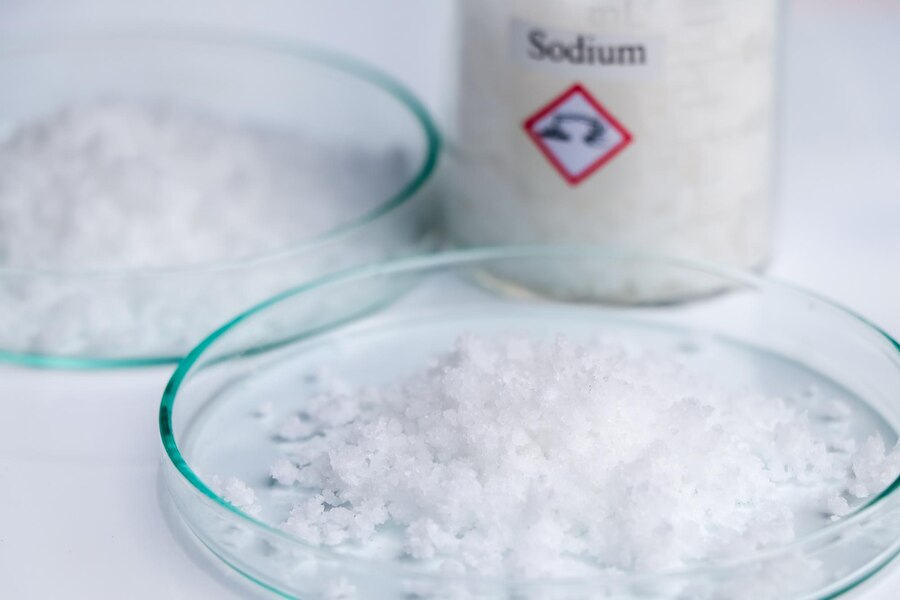Sodium hexametaphosphate (SHMP), also known as Calgon, is a complex inorganic salt with the chemical formula Na6(PO3)6. It is composed of six sodium metaphosphate units, forming a polymeric structure. SHMP is a water-soluble, odorless, and white crystalline compound that finds numerous applications in various industries.
Structure and Properties
The structure of SHMP consists of a repeating NaPO3 unit, with six of these units linked together to form a hexamer. The sodium ions are bonded to the oxygen atoms, and the entire molecule has a cage-like appearance. SHMP has a density of 2.48 g/cm3, a molecular weight of 611.77 g/mol, and a melting point of 628°C.
Preparation and Hydrolysis
SHMP is typically prepared by heating monosodium orthophosphate to generate sodium acid pyrophosphate, which is then further heated to produce SHMP. In aqueous solutions, particularly under acidic conditions or heat, SHMP undergoes hydrolysis to form sodium trimetaphosphate and sodium orthophosphate.
Uses and Applications
SHMP finds widespread use as a sequestrant, emulsifier, suspending agent, and dispersing agent in various industries. Some of its key applications include:
- Food Industry: SHMP is used as an emulsifier in artificial maple syrup, canned milk, cheese powders, imitation cheese, and various other food products. It helps prevent the clumping and sticking together of these products.
- Water Treatment: SHMP helps reduce scale formation, corrosion, and biofilm formation in pipes and equipment when added to municipal or industrial water systems. It acts as a chelating agent, binding to metal ions and preventing their precipitation.
- Ceramic Production: SHMP acts as a deflocculant in the production of clay-based ceramic particles. It helps disperse the particles and improve the rheological properties of the slurry.
- Toothpaste: It is used as an anti-staining and tartar prevention ingredient in toothpastes. SHMP helps remove and prevent the buildup of stains and tartar on teeth.
- Detergents and Cleaning Products: SHMP helps prevent the clumping and sticking together of detergents and cleaning products. It also acts as a water softener, reducing the effects of hard water.
- Drilling Fluids: SHMP finds application in drilling fluids used in the oil and gas industry. It helps control the viscosity and filtration properties of the drilling mud.
Safety and Regulations
SHMP is considered safe for consumption when used as a food additive, with its safety approved by regulatory bodies such as the U.S. Food and Drug Administration (FDA). However, extreme concentrations may cause side effects like irregular pulse, bradycardia, and hypocalcemia due to excessive blood serum sodium levels.
Environmental Considerations
While SHMP is generally considered environmentally friendly, its overuse or improper disposal can lead to eutrophication in water bodies. Eutrophication is the excessive growth of algae and aquatic plants due to high nutrient levels, which can deplete oxygen levels and harm aquatic life. Therefore, it is essential to follow proper usage guidelines and disposal methods when handling SHMP.
Conclusion
Sodium hexametaphosphate is a versatile compound with a wide range of applications in various industries, including food, water treatment, ceramics, and detergents. Its unique properties and ability to form complexes with metal ions make it a valuable ingredient in many products and processes. While SHMP is generally considered safe and environmentally friendly, it is crucial to use it responsibly and dispose of it properly to minimize any potential negative impacts on the environment.
FAQs
What is the purpose of using SHMP in food products?
SHMP is used as an emulsifier in various food products such as artificial maple syrup, canned milk, cheese powders, and imitation cheese. It helps prevent the clumping and sticking together of these products, ensuring a smooth and consistent texture.
How does SHMP work in water treatment systems?
SHMP acts as a chelating agent in water treatment systems. It binds to metal ions, preventing their precipitation and reducing scale formation, corrosion, and biofilm growth in pipes and equipment.
Is SHMP safe for consumption?
Yes, SHMP is considered safe for consumption when used as a food additive. Its safety is approved by regulatory bodies such as the FDA. However, excessive consumption may lead to side effects like irregular pulse, bradycardia, and hypocalcemia due to high blood serum sodium levels.
Can SHMP be harmful to the environment?
While SHMP is generally considered environmentally friendly, its overuse or improper disposal can lead to eutrophication in water bodies. Eutrophication is the excessive growth of algae and aquatic plants due to high nutrient levels, which can deplete oxygen levels and harm aquatic life. It is essential to follow proper usage guidelines and disposal methods when handling SHMP.
What are some alternative names for SHMP?
SHMP is also known by other names such as Calgon, sodium polyphosphate, Graham’s salt, and sodium hexaphosphate. These names all refer to the same compound, sodium hexametaphosphate.










